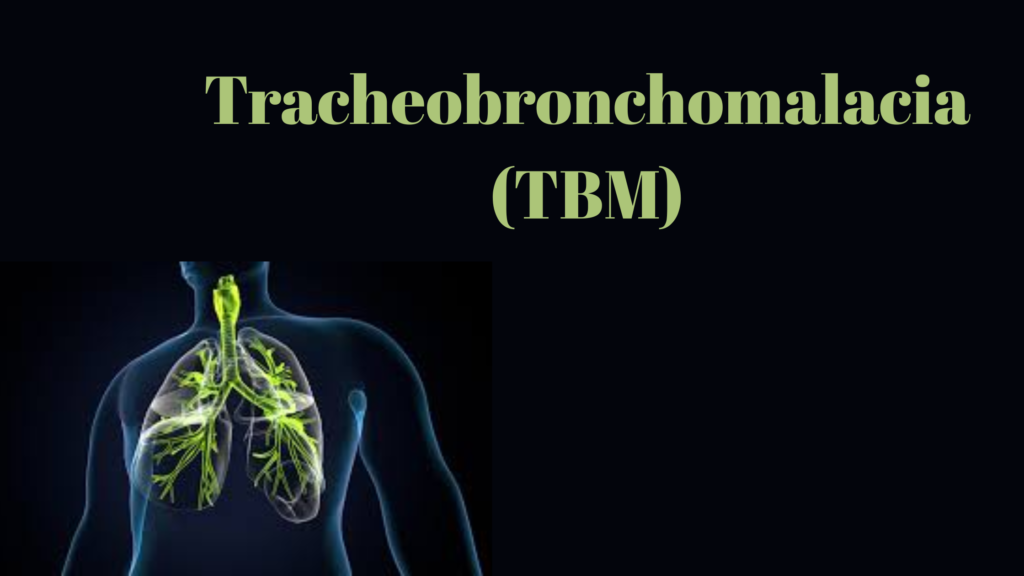Tracheobronchomalacia (TBM) is a condition in which the walls of the trachea and bronchi (main airways) are weak or floppy, leading to airway collapse, especially during exhalation. This results in airflow obstruction, breathing difficulty, and chronic respiratory symptoms.
🧬 What Is Happening in TBM?
- In healthy airways, cartilage keeps the trachea and bronchi open.
- In TBM, this cartilage is soft, weak, or damaged, allowing the airway to collapse during breathing—particularly on expiration (when pressure inside the chest increases).
- The collapse can involve the trachea alone, the bronchi, or both.
🔹 Types of TBM
1. Congenital TBM
- Present at birth
- Often associated with:
- Tracheoesophageal fistula
- Esophageal atresia
- Genetic syndromes (e.g., trisomy 21)
2. Acquired TBM
- Develops later in life due to:
- Chronic inflammation (e.g., chronic bronchitis, asthma, GERD)
- Prolonged intubation or tracheostomy
- External compression (e.g., tumors, enlarged blood vessels)
- Autoimmune disease (e.g., relapsing polychondritis)
- Smoking or environmental damage
⚠️ Symptoms
- Chronic cough
- Wheezing (that does not respond to asthma treatment)
- Stridor (especially with exertion)
- Dyspnea (shortness of breath)
- Recurrent respiratory infections
- “Seal-like” barking cough in children
- Difficulty clearing secretions
🧪 Diagnosis
- Dynamic flexible bronchoscopy (gold standard): visualizes airway collapse during breathing
- Dynamic expiratory CT scan: shows tracheal/bronchial narrowing on expiration
- Pulmonary function tests: may show flattening of expiratory flow curve
- MRI or fluoroscopy: used in selected cases
📊 Severity Grading
- Collapse of >50% of airway lumen during expiration is diagnostic
- Mild, moderate, or severe based on degree and symptoms
💊 Treatment Options
🩺 Conservative Management
- Airway clearance techniques (e.g., chest physiotherapy)
- Bronchodilators (sometimes used with caution)
- Avoid irritants (smoking, pollutants)
- Treat underlying conditions (asthma, GERD)
😷 Positive Airway Pressure
- CPAP or BiPAP – helps stent open the airway, especially during sleep
🛠️ Surgical / Interventional
- Airway stenting (temporary solution; risks include granulation tissue, infection)
- Tracheobronchoplasty – surgical reinforcement of airway walls
- Aortopexy – lifts the aorta away from the airway (in congenital TBM)
🧠 TBM vs Tracheomalacia
| Feature | Tracheomalacia | Tracheobronchomalacia (TBM) |
|---|---|---|
| Area involved | Trachea only | Trachea and bronchi |
| Onset | Congenital or acquired | Same |
| Severity | May be milder | Often more extensive and severe |
🛡️ Prognosis
- Mild TBM: may improve or be manageable with CPAP and therapy
- Severe TBM: may require surgery
- Congenital forms may improve with age; acquired forms require long-term management
